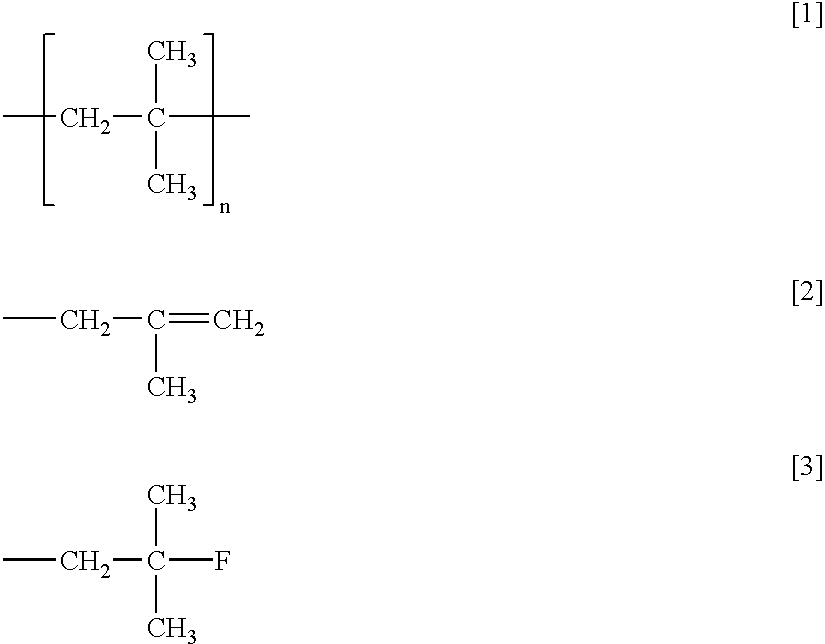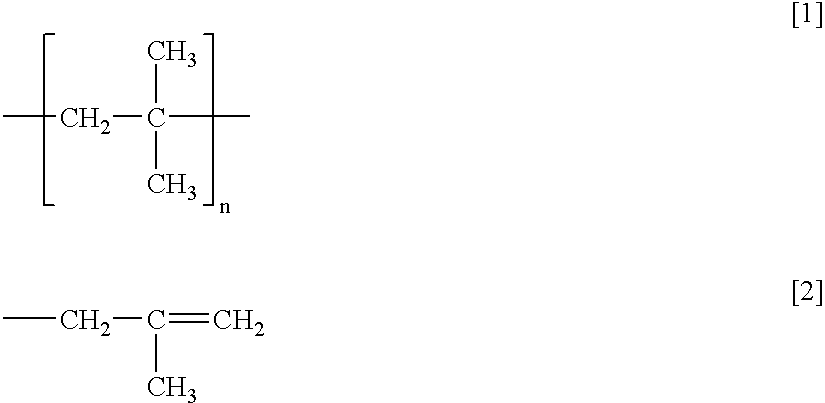Method of dehalogenating hydrocarbon containing carbon-carbon double bond
- Summary
- Abstract
- Description
- Claims
- Application Information
AI Technical Summary
Benefits of technology
Problems solved by technology
Method used
Image
Examples
Embodiment Construction
In the following, the present invention will be described in more detail with examples.
(Step of Production)
Into a recycling type reaction vessel of 4 liter was fed a C.sub.4 fraction (23.8 mass % of 1-butene, 12.4 mass % of 2-butene and 51.6 mass % of isobutene, 12.2 mass % of butanes as saturated component, and trace of butadiene (total: 100 mass %)) at the flow rate of 4 liter per hour, and 0.15 mass % of boron trifluoride and 0.14 mass % of ethanol relative to isobutene were introduced separately into the reaction vessel. Polymerization was carried out continuously using the temperature of -10.degree. C. and LHSV of about 1 h.sup.-1.
(Step of Deactivation and Water Washing)
The obtained reaction liquid was treated with an aqueous solution of 2% NaOH to carry out the deactivation and neutralization of catalysts, further, washed twice with demineralized water. After washing, it was dried and distilled to obtain butene polymer having the number average molecular weight of 1,300, the t...
PUM
| Property | Measurement | Unit |
|---|---|---|
| Fraction | aaaaa | aaaaa |
| Fraction | aaaaa | aaaaa |
| Fraction | aaaaa | aaaaa |
Abstract
Description
Claims
Application Information
 Login to View More
Login to View More - R&D
- Intellectual Property
- Life Sciences
- Materials
- Tech Scout
- Unparalleled Data Quality
- Higher Quality Content
- 60% Fewer Hallucinations
Browse by: Latest US Patents, China's latest patents, Technical Efficacy Thesaurus, Application Domain, Technology Topic, Popular Technical Reports.
© 2025 PatSnap. All rights reserved.Legal|Privacy policy|Modern Slavery Act Transparency Statement|Sitemap|About US| Contact US: help@patsnap.com



